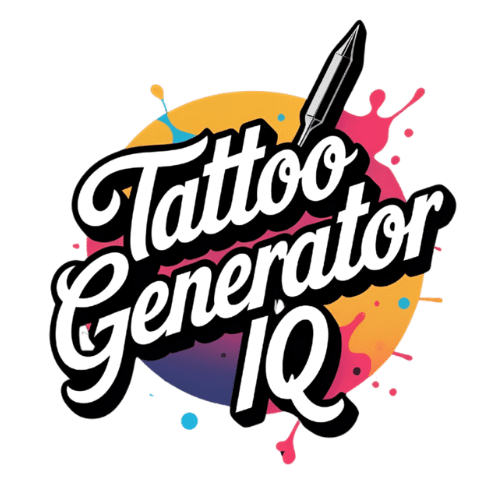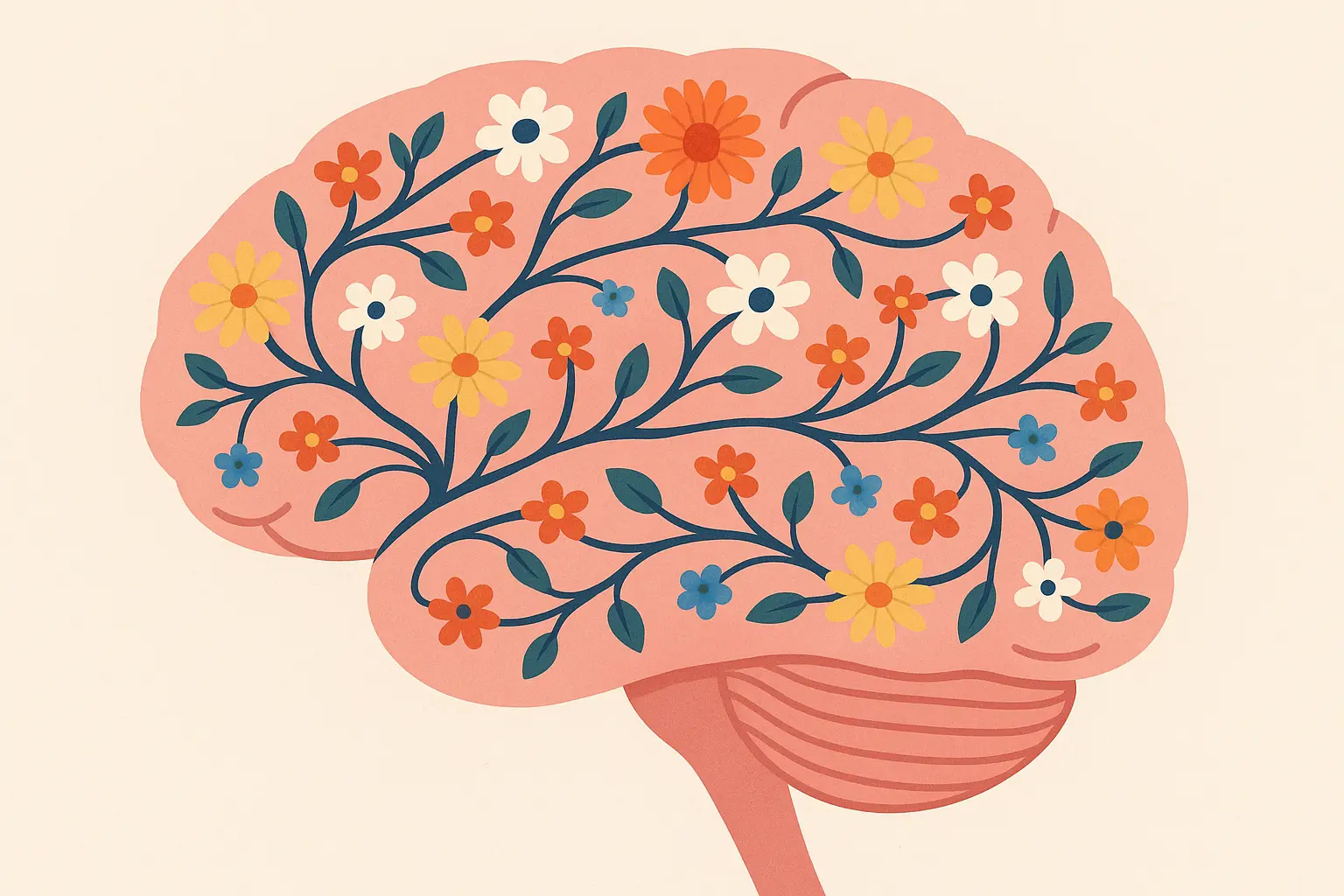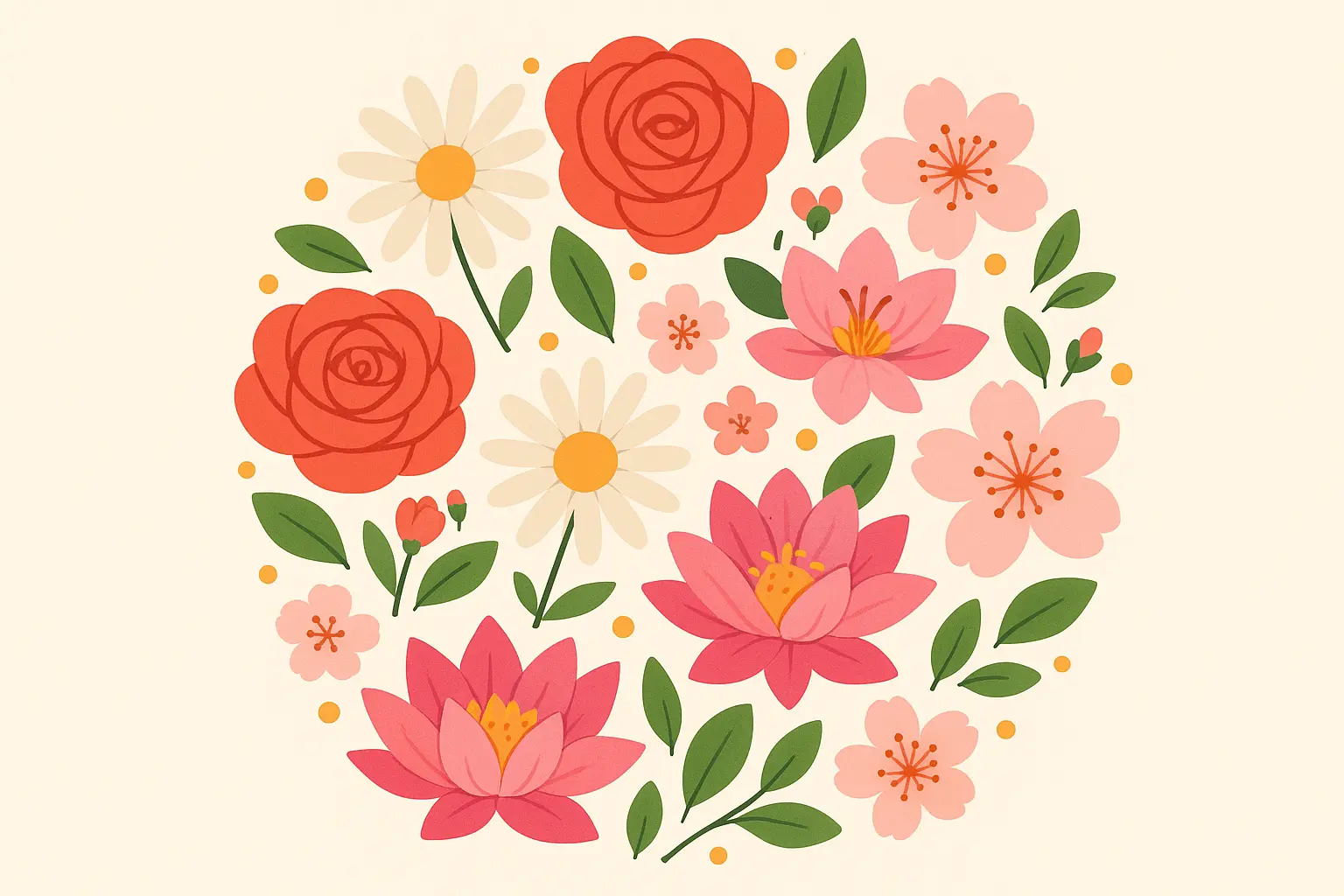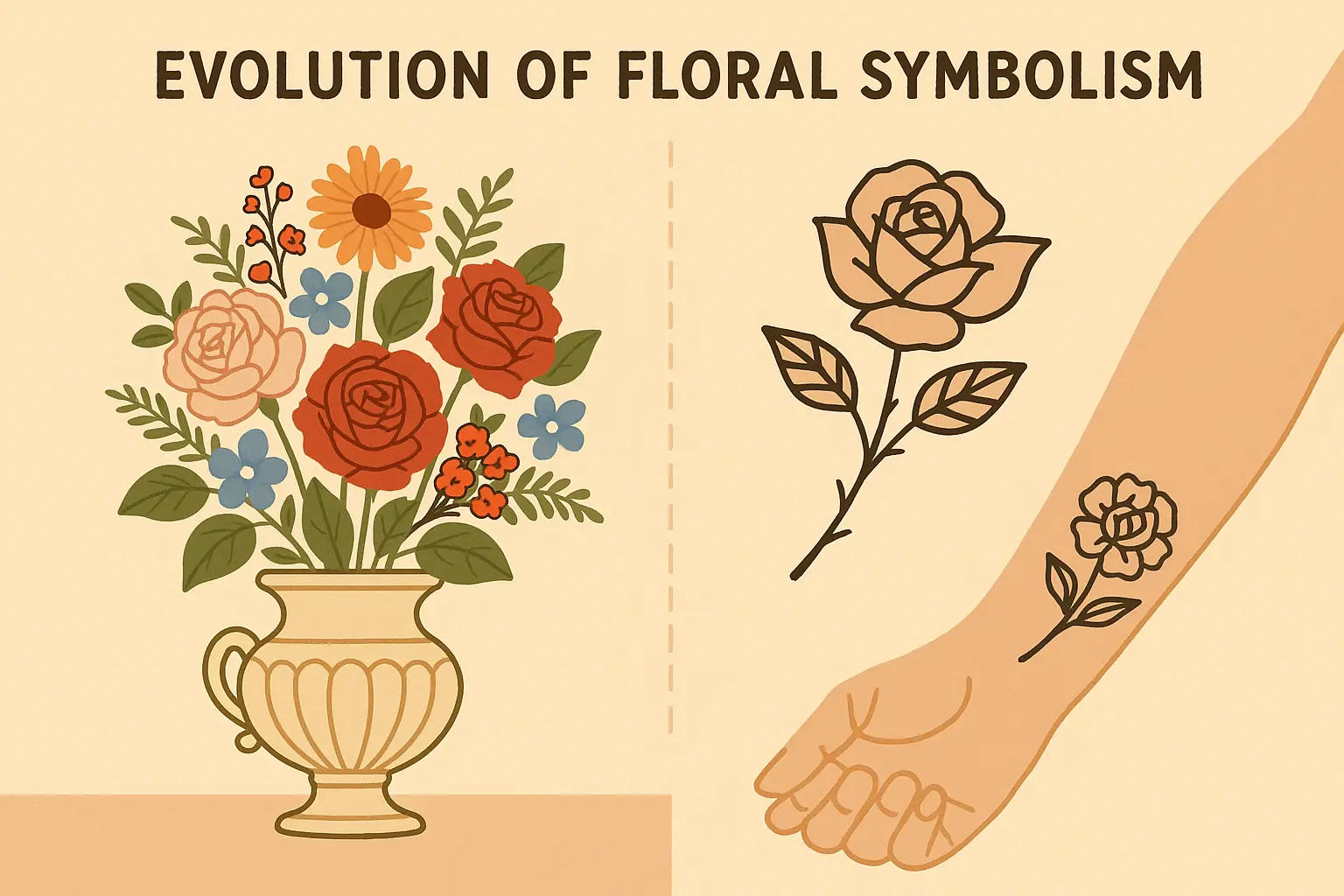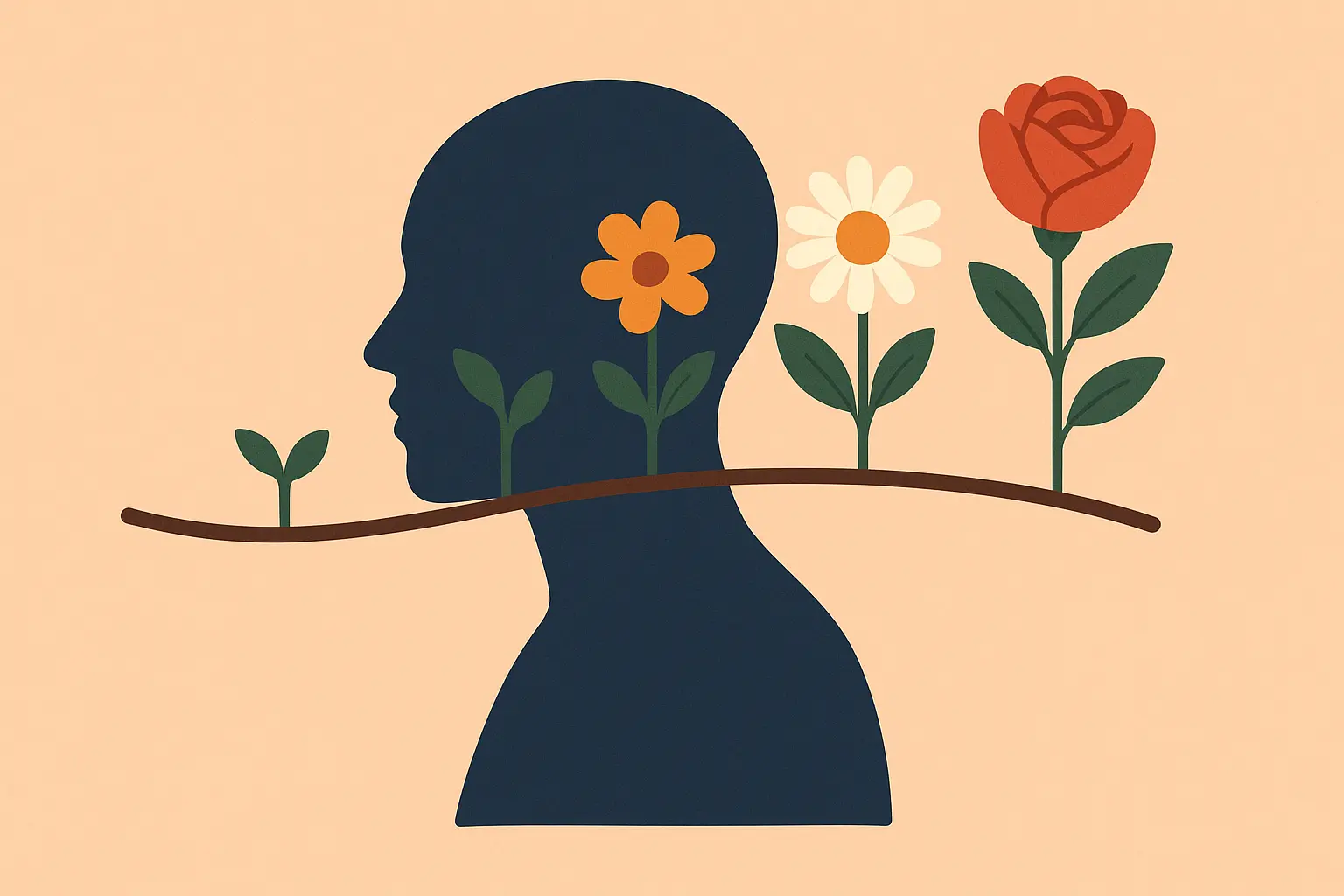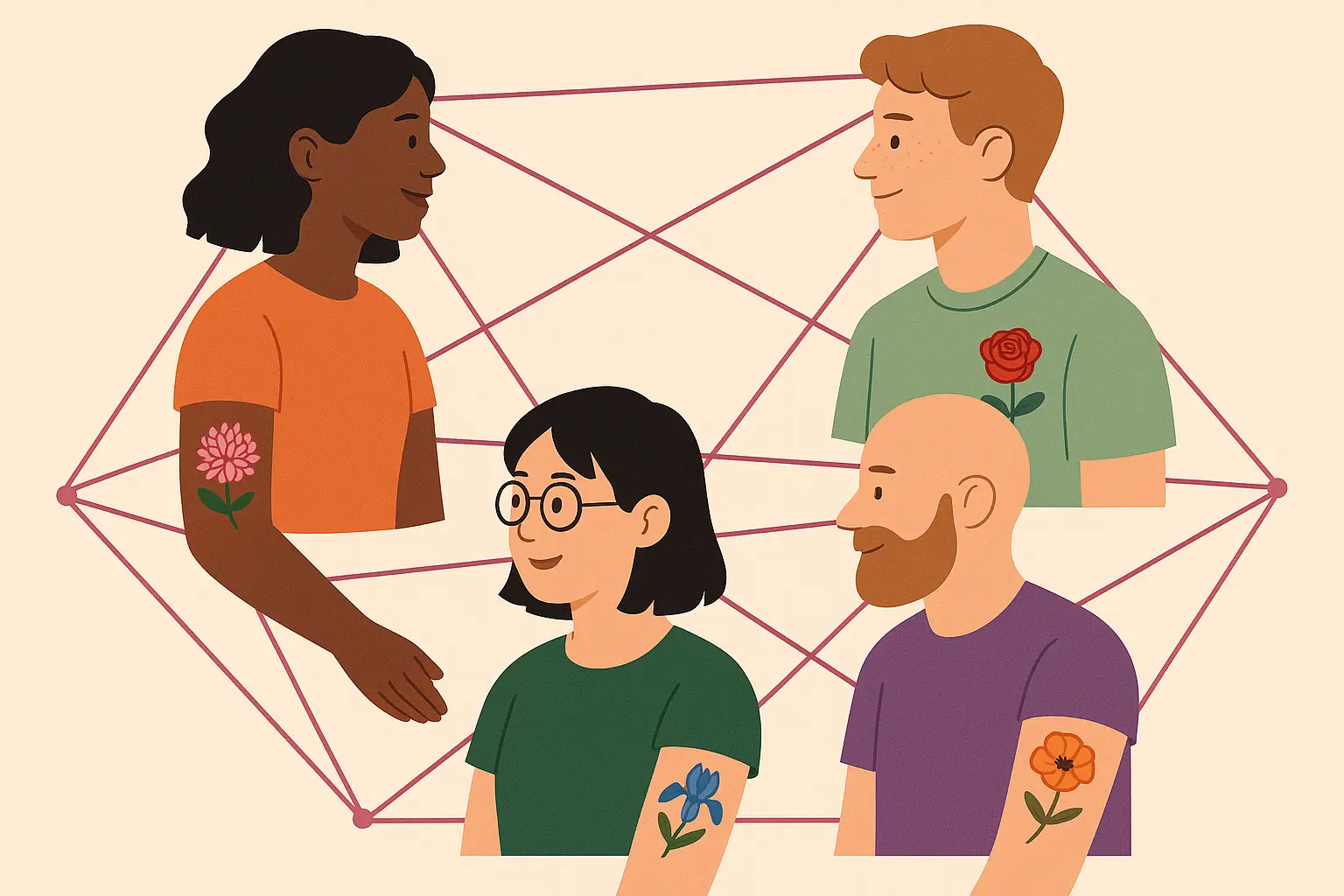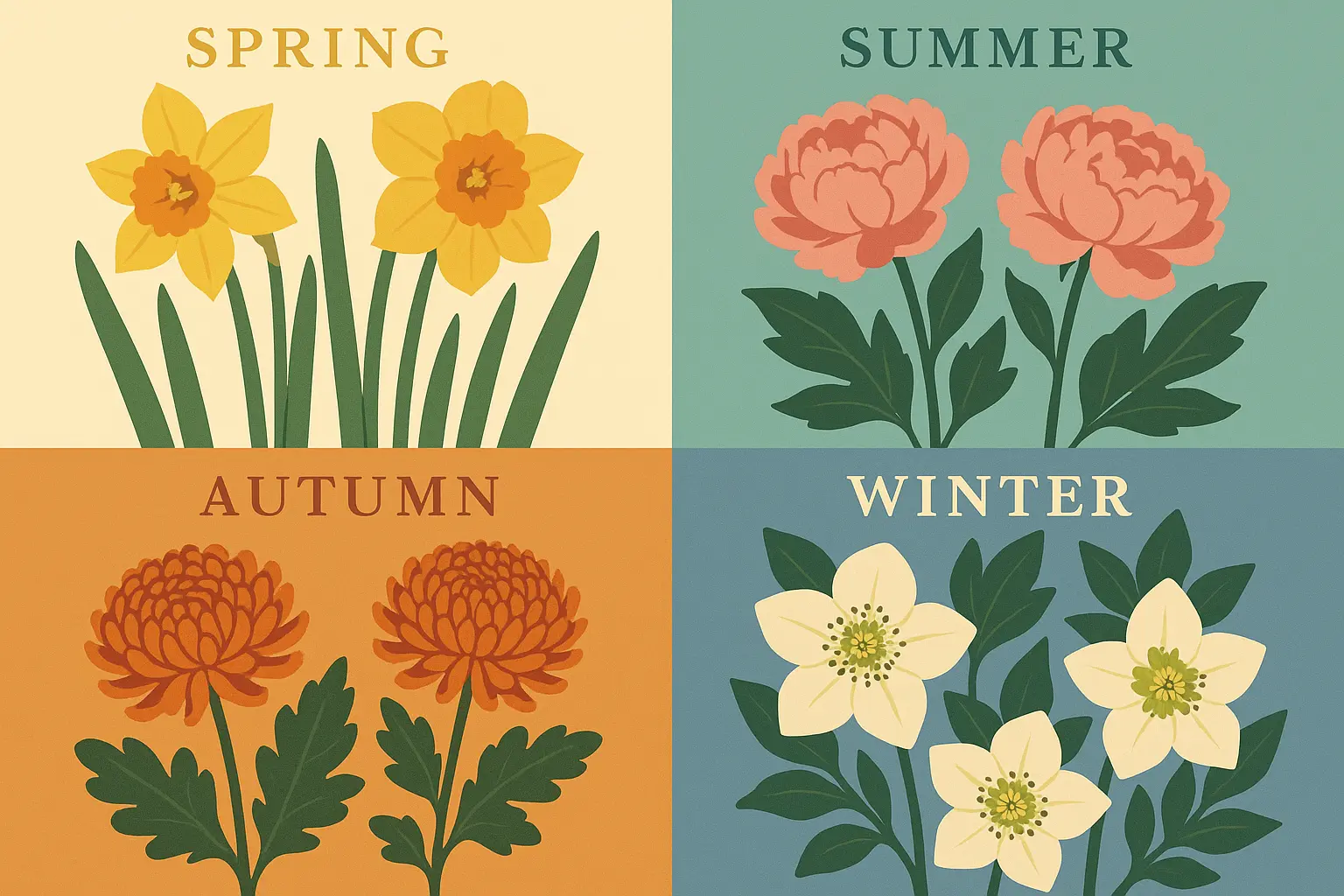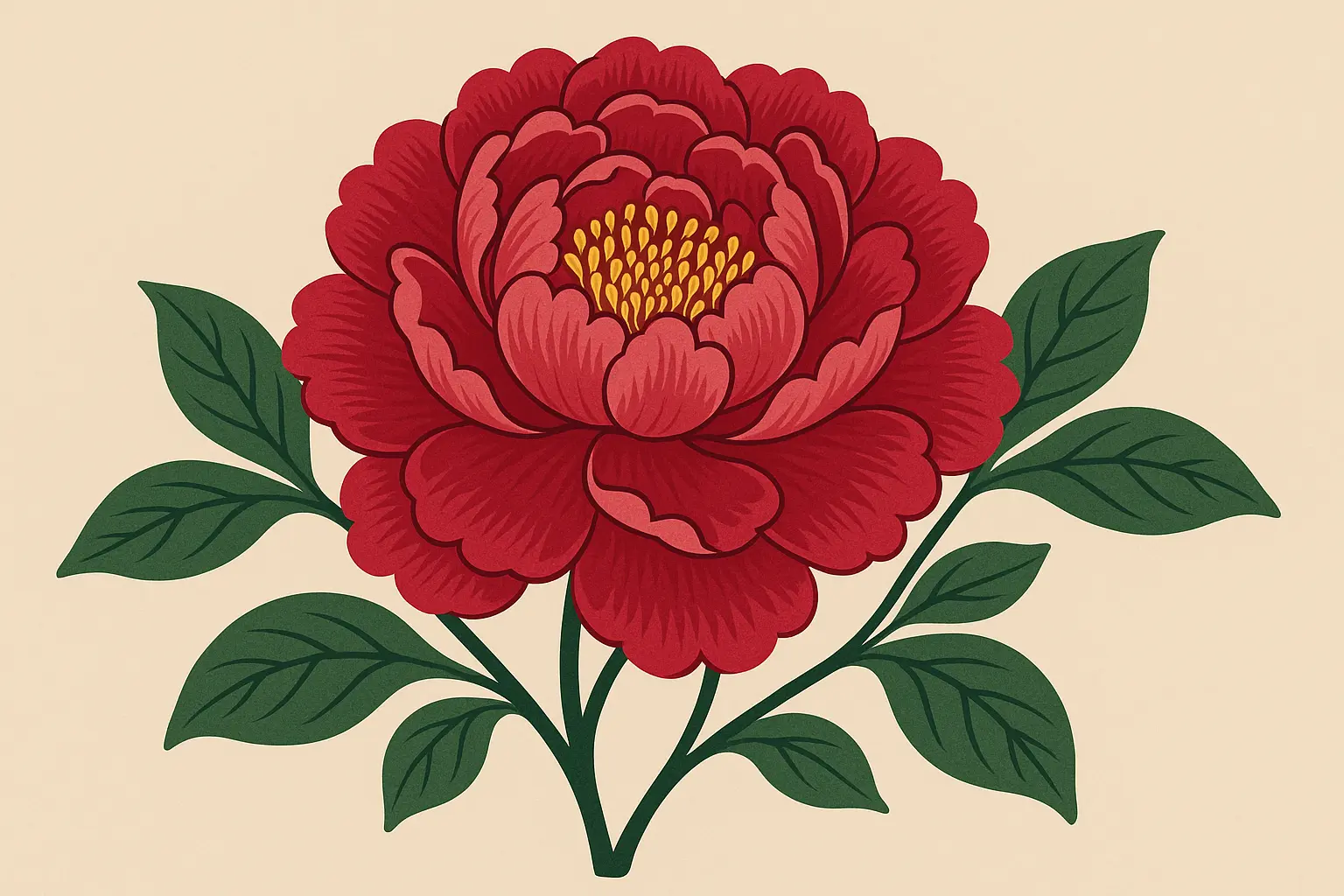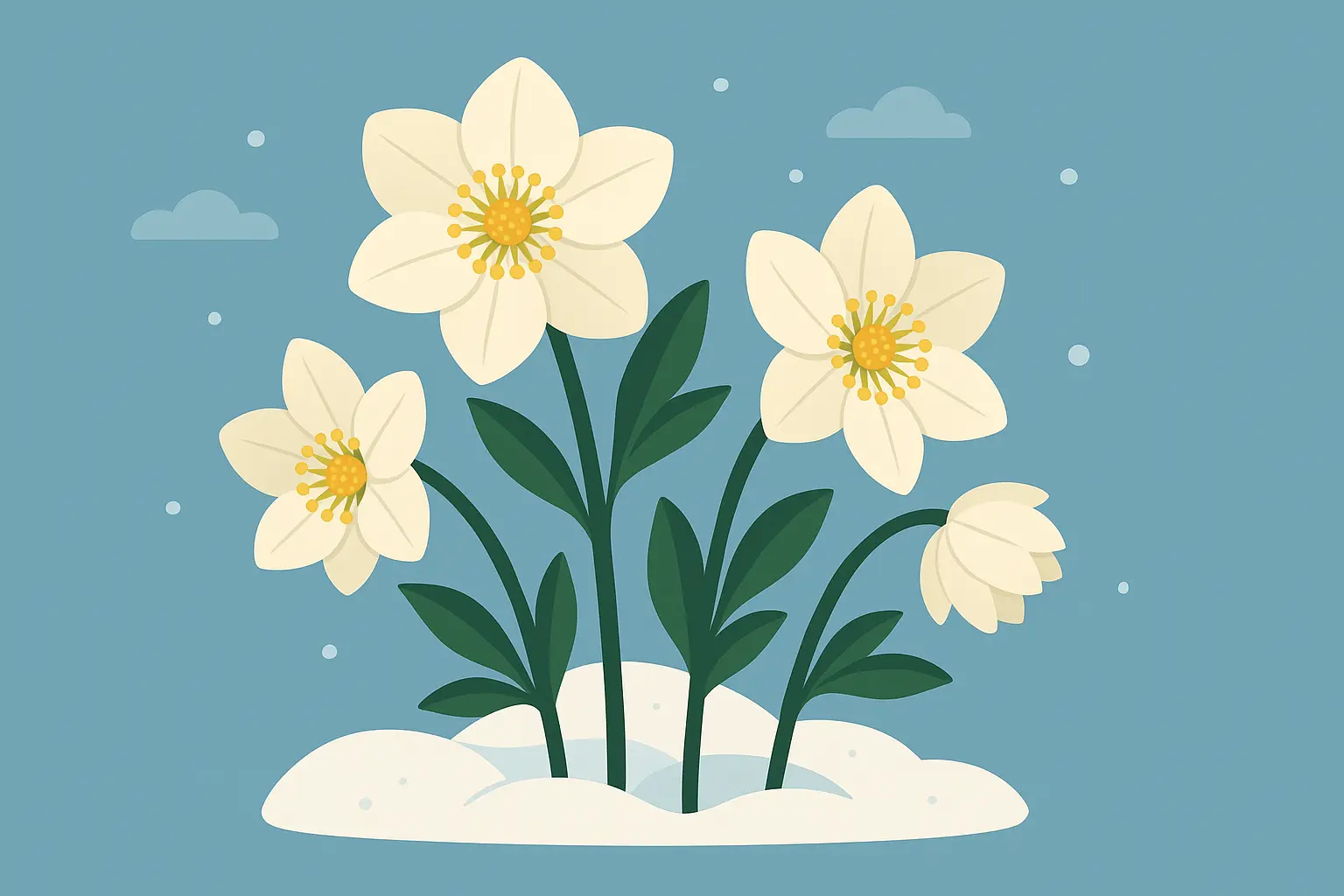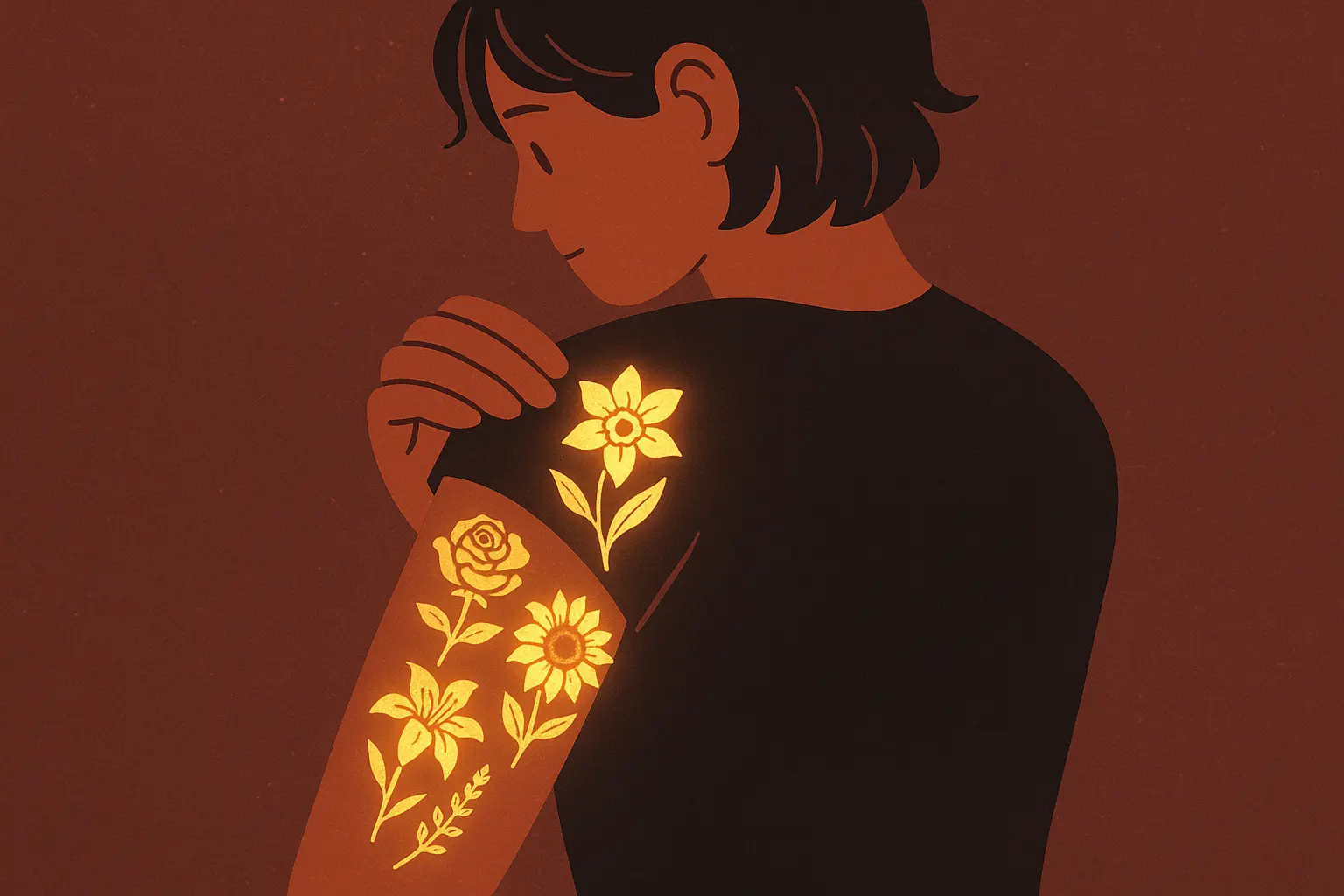Flower Tattoo Meaning Secrets Your Brain Doesn’t Want You to Know
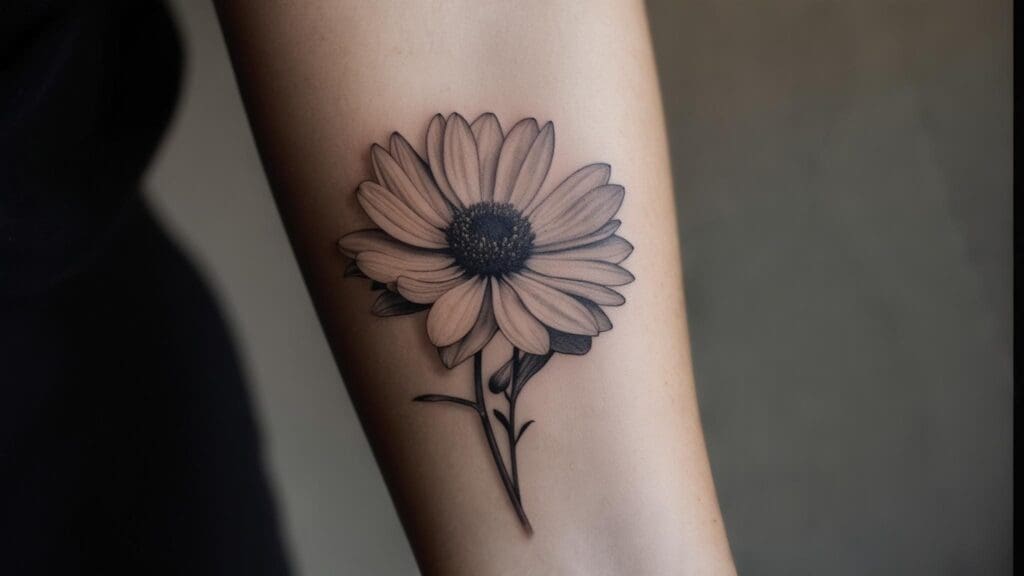
Ever wonder why you’re drawn to certain flower tattoos? There’s actually some pretty cool science behind it. Your brain has been shaped by thousands of years of evolution to react to flowers in specific ways – and you probably don’t even realize it’s happening. What I’ve found after digging into this stuff might surprise you: we don’t just choose flower tattoos because they’re pretty. There’s this whole complex web of brain wiring, family history, and personal healing happening beneath the surface.
Here’s what’s really wild – tattoos have been around for more than 5,000 years. This ancient practice started as a way to put healing or protective symbols permanently on the body, then evolved to show status, and finally became pure self-expression. So when you get that rose tattoo, you’re literally continuing humanity’s oldest art tradition.
Table of Contents
-
The Neurological Language of Floral Symbolism
-
The Temporal Evolution of Flower Tattoo Meanings
-
The Psychological Transformation Journey Through Flower Tattoos
-
The Subconscious Communication System of Flower Tattoos
-
The Seasonal and Lifecycle Symbolism in Flower Tattoo Culture
TL;DR
-
Your brain processes flower images through ancient survival instincts – that’s why roses automatically make you think romance while thorns scream “protection”
-
Victorian flower meanings have been completely flipped in modern tattoo culture, with social media creating new symbolic meanings that spread worldwide in months
-
Flower tattoos work as powerful therapy tools for processing trauma and marking life changes, with specific blooms chosen for different healing stages
-
Your floral body art is actually sophisticated silent communication, letting you signal shared experiences to people who get the symbolic language
-
The flowers you choose mirror your life seasons – spring blooms for fresh starts, summer flowers for peak moments, autumn varieties for hard-earned wisdom, winter bloomers for surviving the impossible
The Neurological Language of Floral Symbolism
You know that feeling when you see a certain flower and just know it’s right for your tattoo? That’s not random. Your brain doesn’t just see a pretty flower when you’re scrolling through tattoo designs – it’s actually running that image through neural pathways that have been developing for thousands of years. I’ve been researching this stuff, and what I found is fascinating: we’re literally wired to recognize and categorize flower patterns in ways that create instant emotional reactions.
This brain processing directly influences which designs make you go “yes, that one!” – often triggering memories and cultural programming you didn’t even know you had. The color psychology piece is particularly cool, with different flower colors lighting up completely different parts of your brain tied to specific memories and feelings.
Understanding why your brain picks certain flowers connects directly to tattoo meaning psychology, where digital culture and AI are reshaping how we interpret symbolic body art. The flower tattoo meaning becomes deeply personal when you realize your brain is making these connections automatically.
How Your Brain Actually Processes Flower Imagery
Here’s the thing – your brain has special wiring just for recognizing plants. Which makes total sense when you think about it. Your ancestors had to know which berries would kill them and which ones made good medicine. These pathways create those instant gut reactions you get when you see a particular bloom.
What’s really cool is how this pattern recognition works. Your limbic system (the emotional center) processes flower images through ancient survival mechanisms. That’s why you feel drawn to certain flower designs over others – it’s not just preference, it’s evolutionary programming.
Why Roses Hit Different Than Daisies
Ever notice how you can spot a rose from across the room? That’s millions of years of evolution working in your favor. When you see a rose, your brain isn’t just processing a flower – it’s firing up ancient survival mechanisms that link red with blood, passion, and life force. Meanwhile, those thorns? They’re triggering protective instincts that kept humans alive for millennia.
This explains why rose tattoos often end up in more intimate or protected spots on your body, while simpler flowers might feel right for visible places. Take my friend Jessica – she always said she just liked roses, but when we really talked about it, she realized she got her thorned rose tattoo right after her divorce. The thorns weren’t just decoration – they were armor. Her brain’s evolutionary programming was guiding her to place that protective symbol near vital organs, while a gentle daisy felt right for public display.
This phenomenon explains why many people gravitate toward stunning flower tattoo designs that feature roses with prominent thorns rather than simpler floral motifs.
The Color Psychology Behind Your Flower Choices
Different flower colors literally light up different parts of your brain – and that’s not just cultural conditioning, it’s neurochemical reality. Your brain sees red roses and immediately thinks passion and romance. White roses? Your brain shifts to calm and safety mode. This evolved because your ancestors needed to quickly identify what colors meant in nature.
Red triggers attention and arousal (think blood, fire, ripe fruit that’s safe to eat), while white activates those peaceful, safe responses. Understanding this helps explain why you might be drawn to purple lavender when you’re dealing with anxiety, or bright yellow sunflowers when you’re climbing out of depression.
Cultural Memory That Lives in Your DNA
That pull you feel toward certain flowers might actually be your great-grandmother’s herbal knowledge bubbling up. The flower meanings you think you’re choosing consciously often got passed down through generations via family stories, religious practices, and cultural traditions. This creates layers of meaning you unconsciously carry into your tattoo decisions.
Many people don’t realize they’re drawn to specific flowers based on ancestral knowledge of medicinal and spiritual plant uses – genetic memory influencing modern choices. Religious and mythological connections continue shaping contemporary tattoo decisions too, with lotus flowers carrying Buddhist enlightenment concepts and lilies maintaining Christian purity symbolism even in completely secular contexts.
Your Ancestors’ Plant Knowledge Lives in Your Tattoo Choices
That inexplicable attraction you feel toward certain flowers might actually be inherited botanical wisdom surfacing in your modern tattoo decisions. Your ancestors relied on plants for medicine, food, and spiritual practices, creating deep cultural associations that get passed down through generations. When you choose a particular flower without really knowing why, you might be tapping into this ancestral knowledge.
Genetic memory works in fascinating ways – you could be drawn to chamomile tattoos because your great-grandmother used it for healing, even if you never knew her personally.
Sacred Symbols That Transcend Religion
Ancient religious and mythological flower associations continue influencing modern tattoo choices in surprising ways. Even if you’re not religious, you might choose lotus flowers because they carry Buddhist enlightenment concepts that resonate with your personal growth journey. Christian lily symbolism maintains its purity associations across secular contexts too.
These sacred botanical symbols have become so embedded in our collective consciousness that they influence tattoo decisions regardless of personal religious beliefs. The lotus flower tattoo meaning demonstrates how ancient spiritual symbolism continues to resonate in modern body art choices.
Geographic Flowers as Identity Markers
People often choose flowers native to their birthplace or ancestral homeland as powerful identity markers, creating deeper personal meaning through geographical botanical connections. This goes way beyond traditional symbolic interpretations – it’s about claiming your roots through flora.
Someone might choose Texas bluebonnets because they need that connection to home, creating identity anchors that transcend typical flower meanings.
The Temporal Evolution of Flower Tattoo Meanings
Here’s what’s wild about flower meanings – they’re not set in stone. They’ve dramatically shifted through different historical periods, and modern tattoo culture is creating entirely new symbolic frameworks that often flip traditional interpretations upside down. What’s really crazy is how quickly these changes happen now. Social media has accelerated the creation of new flower meanings at an unprecedented pace, with viral posts and influencer interpretations establishing fresh symbolic associations that spread globally within months.
The Victorian language of flowers has been completely reimagined in contemporary body art, reflecting modern values and personal experiences rather than historical conventions.
|
Historical Period |
Flower |
Traditional Meaning |
Modern Tattoo Meaning |
|---|---|---|---|
|
Victorian Era |
Forget-Me-Not |
“Remember me” (romantic) |
Memorial for deceased loved ones |
|
Ancient Egypt |
Lotus |
Creation and rebirth |
Spiritual awakening and recovery |
|
Medieval |
Rose |
Courtly love |
Trauma survival with thorns |
|
Japanese Traditional |
Cherry Blossom |
Life’s transience |
Accepting impermanence after loss |
|
Modern Social Media |
Sunflower |
Loyalty and adoration |
Mental health recovery symbol |
Victorian Flower Language vs. Modern Tattoo Reality
Back in Victorian times, people had this whole elaborate system of communicating through flower arrangements called floriography. If you gave someone forget-me-nots, you were basically saying “don’t forget me, babe.” Now? Those same flowers are showing up in memorial tattoos for people who’ve lost someone they loved. Same flower, totally different heartbreak.
This shift from romantic messaging to grief processing shows how dramatically flower meanings can evolve to meet contemporary emotional needs. The Victorians would probably be shocked to see how we’ve repurposed their romantic flower language.
When Forget-Me-Nots Became Memorial Flowers
Victorian forget-me-nots carried romantic “remember me” messages between lovers, but modern tattoo culture has completely transformed their meaning into powerful memorial symbols for deceased loved ones. This shift from romantic to grief processing contexts demonstrates how flower meanings evolve to serve contemporary emotional needs.
Today’s forget-me-not tattoos help people process loss and maintain connections with those who’ve passed away, showing how the same flower can serve entirely different psychological functions across different eras.
This transformation of flower meanings for memorial purposes has gained renewed attention following tragic cases. Gabby Petito’s family members all got matching tattoos of “a flower inside a triangle” along with other designs that Gabby had created herself, demonstrating how flower tattoos serve as powerful tools for processing grief and maintaining connection with lost loved ones.
This memorial transformation connects to broader trends in meaningful tattoo ideas that help people process loss and commemorate loved ones.
How Social Media Creates New Flower Meanings Overnight
Instagram, Pinterest, and TikTok have completely revolutionized how flower meanings develop and spread. What used to take decades or centuries now happens in months or even weeks. Here’s what’s wild: a single post from someone with a big following can completely flip what a flower means. Like, overnight.
Sunflowers used to be all about loyalty and devotion. Now they’re the unofficial symbol of mental health recovery, and it all started with a few viral posts. These digital platforms show how quickly new symbolic frameworks can be established and adopted globally.
Hashtag Culture Reshaping Flower Symbolism
Social media hashtags create instant flower meaning associations that spread faster than traditional cultural transmission ever could. #sunflowerpower has become synonymous with mental health recovery, while #wildflowertattoo represents free-spirited independence. These hashtag-driven meanings develop organically through user-generated content, creating new symbolic frameworks that can reach millions of people within days.
Digital culture can rapidly generate and establish flower meanings that feel just as authentic as centuries-old traditions. The rapid evolution of flower symbolism through social media parallels broader changes in sunflower tattoo meaning, where traditional loyalty symbols have transformed into mental health recovery markers.
Celebrity Flower Stories That Change Everything
When celebrities share personal flower tattoo stories on social media, they instantly create new meaning associations that followers adopt worldwide. A single Instagram post from an influencer explaining their sunflower tattoo’s connection to overcoming depression can shift global interpretations of that flower symbol within days.
These celebrity-created flower narratives demonstrate the incredible power of digital influence in shaping contemporary symbolic language, often overriding traditional meanings entirely.
The Psychological Transformation Journey Through Flower Tattoos
Flower tattoos aren’t just pretty decorations – they’re powerful therapy tools that help people process trauma, mark life transitions, and express identity evolution. I’ve noticed how specific flowers get chosen to represent different stages of personal growth and healing journeys. The natural cycle of blooming, wilting, and reblooming serves as a perfect metaphor for bouncing back from difficult life experiences.
What’s particularly fascinating is how people build floral tattoo collections over time, creating visual stories of their personal transformation through carefully selected botanical symbols.
This therapeutic aspect of flower tattoos connects deeply with mental health tattoo ideas that help people express and process their psychological journeys.
Flowers as Healing Metaphors in Your Recovery Story
Many people choose flower tattoos as visual representations of their healing journey, using the natural blooming cycle as a powerful metaphor for personal growth. If you’re someone who’s survived something terrible, the idea of getting a thorned rose might feel exactly right. Those thorns aren’t just pretty details – they’re your way of saying “I’m beautiful, but I’m also protected now.”
Cherry blossom tatt
Cherry blossom tattoos help people process grief and loss by embracing impermanence, while lavender tattoos become symbols for anxiety management and mental health recovery.
Why Trauma Survivors Choose Thorned Roses
A lot of people who’ve been through hell choose roses with big, obvious thorns. It’s like saying, “Yeah, I’ve been hurt, but look how beautiful I am now.” The thorns aren’t just decorative elements – they’re protective symbols that acknowledge past hurt while celebrating current strength and beauty. This dual symbolism allows people to honor their difficult experiences without being defined by them.
The placement of these thorned rose tattoos often reflects the protective nature of the symbol, appearing on areas of the body that feel vulnerable or need symbolic armor.
I know someone who got a detailed rose with prominent thorns wrapping around her wrist – the same wrist that had been restrained during an abusive relationship. The thorns served as both protection and reminder of her strength, while the blooming rose represented her ability to find beauty and love again despite her traumatic past.
Cherry Blossoms for Making Peace with Loss
Your great-great-grandmother might have used cherry blossoms to talk about life being short. Today, people get them tattooed when they’re learning to be okay with things ending. Cherry blossom tattoos help individuals process grief and loss by embracing the Japanese concept of mono no aware – finding beauty in impermanence.
The flower’s brief blooming period becomes a metaphor for accepting life’s temporary nature, helping people find peace with death, divorce, or other major losses. These tattoos often mark the moment when someone transitions from fighting impermanence to accepting it as part of life’s natural beauty.
The therapeutic power of cherry blossom tattoo art demonstrates how traditional Japanese symbolism helps modern individuals process grief and acceptance.
Lavender Tattoos as Anxiety Management Symbols
People dealing with anxiety often choose lavender tattoos to represent their journey toward calm and peace. The flower’s natural calming properties serve as both personal reminder and public statement about mental health recovery. These tattoos function as visual anchors during panic attacks or stressful moments, providing a physical symbol to focus on when anxiety peaks.
The placement is often on easily visible areas for quick access during difficult moments.
Building Your Identity Story Through Floral Collections
Different flowers get chosen to commemorate specific life transitions, with people building floral tattoo collections that tell their personal evolution story through botanical symbols. Career changers frequently choose sunflowers to represent following their authentic path, while relationship status changes might be marked by progressing from single stem tattoos to bouquet designs.
This approach creates living artwork that evolves with personal growth and life changes.
Sunflowers for Professional Reinvention
Career changers frequently choose sunflowers to represent their decision to “follow their light” and pursue authentic professional paths. The flower’s heliotropic nature (always turning toward the sun) becomes a metaphor for staying true to personal values despite external pressures or expectations.
These tattoos often appear during major career transitions – leaving corporate jobs for creative pursuits, starting businesses, or returning to school for new degrees.
Single Stems Growing Into Bouquets
Some people start with single flower tattoos representing independence, then add complementary flowers as relationships develop and deepen. This creates living artwork that evolves with romantic journeys and partnership growth. The progression from single stem to bouquet becomes a visual timeline of relationship milestones, with each added flower representing significant moments.
Flower Tattoo Journey Checklist:
-
Identify your current life phase and emotional needs
-
Research flowers that symbolically align with your experience
-
Consider placement based on visibility and personal significance
-
Plan for potential future additions to create a cohesive story
-
Choose an artist experienced in floral designs
-
Document the meaning behind each flower for future reference
The Subconscious Communication System of Flower Tattoos
There’s this whole secret language happening with flower tattoos that most people don’t even know about. Your flower tattoos work as sophisticated silent communication, letting you signal personal values, life experiences, and cultural connections to others who understand the symbolic language. This creates instant connections and community recognition in ways that regular conversation might not achieve.
See someone with a semicolon hidden in their flower tattoo? They’re part of the suicide prevention community, and that little symbol is their way of saying “I’m still here, and so are you.” The recovery community has basically claimed lotus flowers as their own, while LGBTQ+ folks often incorporate rainbow schemes into floral designs for subtle pride expression.
Flower Tattoos as Secret Community Passwords
Specific flower choices serve as tribal markers within various communities, allowing you to identify shared experiences, values, or backgrounds through subtle botanical symbolism. The mental health community has developed flower combinations with semicolons to represent suicide prevention solidarity, creating visual language that allows survivors to identify and support each other.
LGBTQ+ individuals often incorporate rainbow color schemes into flower tattoos, while the recovery community uses lotus flowers to represent emerging clean from difficult circumstances.
Semicolon Flowers for Mental Health Solidarity
The mental health community has developed specific flower combinations with semicolons to represent suicide prevention solidarity and survival. These tattoos create a visual language that allows survivors to identify and support each other through shared symbolic understanding. The semicolon represents a sentence the author could have ended but chose to continue, while the accompanying flowers add beauty and hope to the survival narrative.
According to research on popular flower tattoos based on Instagram hashtag frequency, mental health awareness designs have become increasingly prevalent in modern tattoo culture, demonstrating how digital platforms amplify community-based symbolic meanings.
This community-based symbolism connects to broader semicolon tattoo meaning movements that combine punctuation with floral elements for powerful mental health messaging.
Rainbow Flowers for Pride Expression
LGBTQ+ individuals often incorporate rainbow color schemes into flower tattoos or choose flowers with natural rainbow varieties to express pride identity while maintaining the beauty and femininity of floral imagery. This allows for subtle pride expression that doesn’t rely on obvious symbols. The approach works particularly well for people in less accepting environments who need more discrete ways to signal their identity to community members.
Lotus Flowers for Recovery Milestones
Different stages of blooming equal different stages of getting clean. It’s like a beautiful, living timeline of someone’s journey. The recovery community has adopted lotus flowers as symbols of emerging clean and beautiful from muddy circumstances, with different lotus stages representing various sobriety milestones and recovery achievements. A closed bud might represent early recovery, while a full bloom celebrates long-term sobriety.
These tattoos create instant recognition among people in recovery, fostering connection and mutual support through shared symbolic language.
|
Community |
Flower Symbol |
Hidden Meaning |
Recognition Signal |
|---|---|---|---|
|
Mental Health Survivors |
Semicolon + Forget-Me-Not |
Suicide prevention solidarity |
Immediate support identification |
|
LGBTQ+ Pride |
Rainbow Iris |
Identity expression |
Discrete community signaling |
|
Recovery Community |
Lotus (various stages) |
Sobriety milestones |
Mutual recovery support |
|
Trauma Survivors |
Thorned Rose |
Beauty from pain |
Shared strength recognition |
|
Grief Processing |
Cherry Blossom |
Accepting impermanence |
Loss support network |
The Seasonal and Lifecycle Symbolism in Flower Tattoo Culture
People don’t usually plan it this way, but I’ve noticed that folks often choose flowers that match where they are in life. Peak career moment? Hello, big beautiful peony. Surviving something that should have broken you? Winter-blooming hellebore it is. Flower tattoos increasingly represent specific life seasons and biological cycles, with people choosing blooms that mirror their current life phase.
This creates dynamic meaning that evolves as you age and your relationship with your tattoos deepens. Spring flowers represent breakthrough moments and new beginnings, summer blooms reflect peak life expression and achievement, autumn flowers symbolize wisdom gained through experience, while winter-blooming varieties represent extraordinary resilience during harsh periods.
Spring Flowers for Life’s Fresh Starts
There’s something about getting a spring flower tattoo when your life is finally turning around. Daffodils pushing through snow? That might be exactly how you feel after a divorce or beating addiction. Spring flowers represent breakthrough moments, new relationships, career launches, or recovery milestones. Their early blooming nature symbolizes the courage to emerge despite harsh conditions.
The trend toward “small flower tattoos are a great way to add a little color to your collection of ink, brightening your day” reflects how people are increasingly choosing subtle spring flower designs to mark new beginnings without overwhelming commitment, allowing for gradual tattoo collection building as life phases evolve.
Daffodils for Post-Divorce Independence
Recently divorced individuals often choose daffodils to represent their emergence into single life and newfound independence. The flower’s ability to bloom through snow becomes a powerful metaphor for strength to thrive despite emotional winter periods. These tattoos often mark the transition from grief over relationship loss to excitement about new possibilities and personal freedom.
I know someone who got a small daffodil tattoo on his ring finger six months after his divorce was finalized – replacing where his wedding ring once sat. The spring flower symbolized his readiness to bloom again after the emotional winter of his marriage ending, serving as a daily reminder that new growth was possible even in the coldest seasons of life.
Summer Flowers for Peak Life Expression
Summer flowers represent individuals at their peak life expression – successful careers, strong relationships, or personal achievement periods. Full, abundant blooms reflect confidence and life satisfaction. Peonies, with their luxurious full blooms, are chosen by individuals celebrating career peaks, business success, or professional recognition, representing the full flowering of their professional capabilities.
Peony Tattoos for Career Achievement Celebration
Peonies, with their full, luxurious blooms, are chosen by individuals celebrating career peaks, business success, or professional recognition. These flowers represent the full flowering of professional capabilities and the satisfaction of achieving long-term goals. The timing of these tattoos often coincides with promotions, business launches, or other major professional milestones.
Autumn Flowers for Hard-Earned Wisdom
Autumn flowers represent wisdom gained through experience, with their late-season blooming symbolizing beauty that comes with age and the value of persistent growth. These flowers appeal to people who’ve weathered life’s challenges and emerged with deeper understanding and appreciation for life’s complexities.
Traditional flower meanings show that chrysanthemums represent nobility and longevity, making them particularly meaningful for individuals entering their wisdom years who want to celebrate both their accumulated experience and their continued growth potential.
The wisdom symbolism of autumn flowers connects to chrysanthemum tattoo designs that celebrate maturity and life experience.
Winter Flowers for Extraordinary Resilience
Winter-blooming flowers represent extraordinary resilience, chosen by individuals surviving difficult periods who want to commemorate their ability to bloom despite harsh circumstances. People with chronic illnesses often choose hellebores (Christmas roses) that bloom in winter, representing their ability to find beauty and maintain hope during the darkest, most challenging health periods.
Hellebore Tattoos for Medical Challenge Survival
People with chronic illnesses often choose hellebores (Christmas roses) that bloom in winter, representing their ability to find beauty and maintain hope during the darkest, most challenging health periods. These flowers symbolize the extraordinary strength required to maintain positivity and grace while dealing with ongoing medical challenges. The winter blooming aspect emphasizes thriving during the most difficult seasons of life.
Seasonal Flower Selection Guide:
-
Spring Flowers: New beginnings, recovery, fresh starts
-
Summer Flowers: Peak achievement, confidence, abundance
-
Autumn Flowers: Wisdom, maturity, life experience
-
Winter Flowers: Resilience, survival, extraordinary strength
How Tattoo Generator IQ Helps You Express Your Flower Story
Understanding the deep psychological and cultural layers of flower tattoo meanings becomes even more powerful when you have access to professional-quality design tools that can capture your personal story. Tattoo Generator IQ’s advanced AI technology helps you explore these complex symbolic relationships by generating multiple variations of flower designs that honor both universal and personal significance. With 8+ authentic tattoo styles and custom blending capabilities, you can experiment with different artistic interpretations to see how traditional, neo-traditional, or geometric approaches might express your unique symbolic language.
Final Thoughts
The bottom line? Your flower tattoo choice is probably way more meaningful than you think. Whether you’re drawn to roses, daisies, or something completely unexpected, trust that instinct. Your brain – and your heart
The bottom line? Your flower tattoo choice is probably way more meaningful than you think. Whether you’re drawn to roses, daisies, or something completely unexpected, trust that instinct. Your brain – and your heart – know what they’re doing.
Your flower tattoo isn’t just about picking something pretty – it’s about tapping into ancient brain wiring, family history, and personal transformation stories that run much deeper than surface aesthetics. Whether you’re drawn to thorned roses for trauma survival, cherry blossoms for accepting impermanence, or lotus flowers for recovery milestones, your brain is processing complex layers of meaning that connect you to both evolutionary history and contemporary community.
What’s really cool is how these meanings keep evolving through digital culture and personal experience. What started as Victorian flower language has transformed into hashtag-driven symbolism and celebrity-influenced narratives that spread globally within days. Your flower tattoo becomes part of this ongoing cultural conversation while serving your individual psychological needs for healing, identity expression, and community connection.
Remember that seasonal and lifecycle symbolism adds another dimension to your choice – spring flowers for new beginnings, summer blooms for peak expression, autumn varieties for wisdom, winter flowers for extraordinary resilience. These temporal meanings create dynamic relationships with your tattoo that deepen as you age and your life circumstances change.
